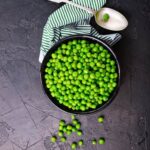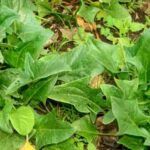Are you interested in growing vegetables but don’t have the space for a traditional garden? Look no further than containers for gardening vegetables. Container gardening offers numerous benefits, including convenience and flexibility, making it an ideal option for those with limited outdoor space or urban environments. In this article, we will explore the advantages of container gardening for growing vegetables and provide guidance on how to get started.
Container gardening allows individuals to cultivate a variety of vegetables in a small area, whether it’s a balcony, patio, or windowsill. The versatility of containers makes it possible to grow fresh produce even in urban settings where access to garden plots may be limited. With the right containers and techniques, anyone can enjoy the satisfaction of harvesting homegrown vegetables right outside their door.
In addition to its space-saving benefits, container gardening offers the flexibility to move plants around as needed to optimize sunlight exposure and growing conditions. Whether you’re a seasoned gardener or just starting out, container gardening provides an accessible and rewarding way to produce your own vegetables. Let’s delve into the world of container gardening for vegetables and discover how you can successfully grow your favorite produce in pots and planters.
Choosing the Right Containers
When it comes to container gardening for vegetables, choosing the right containers is crucial for the success of your garden. There are various types of containers suitable for growing vegetables, each with its own set of advantages and considerations. From traditional pots to raised beds, the options are plentiful and can cater to different gardening preferences and needs.
Types of Containers
Pots are a popular choice for container gardening and come in a range of sizes and designs. They are versatile and can be used for individual plants or mixed plantings, making them suitable for various vegetable varieties.
Planters offer a larger planting area and are perfect for accommodating several vegetables in a single container, ideal for those looking to create vibrant, multi-vegetable displays. Raised beds provide depth for root development and can be raised to a convenient height, making them an excellent choice for vegetable gardening, especially for those who prefer not to bend over while tending to their plants.
Materials Used
The material of the container is another important factor to consider. Plastic containers are lightweight, affordable, and low maintenance; however, they may not provide as much insulation as other materials. Terracotta pots have natural breathability but may require more frequent watering due to their porous nature. Wooden containers can be aesthetically pleasing and provide good insulation but may require more upkeep due to potential rotting.
When deciding on the type and material of your containers for gardening vegetables, take into account factors such as durability, aesthetics, water retention, drainage capabilities, and the specific needs of the vegetables you plan to grow. Making informed choices will contribute to the overall success of your container garden.
Selecting the Perfect Location for Your Containers
When it comes to cultivating a thriving vegetable garden in containers, choosing the right location is crucial for the success of your plants. Whether you have a small balcony, a sunny patio, or limited outdoor space, container gardening offers the flexibility to grow vegetables in various environments. When selecting the perfect location for your containers, it’s essential to consider factors such as sunlight requirements and proximity to water sources.
For optimal growth and productivity, most vegetables require at least 6-8 hours of direct sunlight each day. Therefore, it’s important to place your containers in an area that receives adequate sunlight, especially if you’re growing sun-loving vegetables like tomatoes, peppers, or cucumbers. If you have limited access to natural sunlight, consider utilizing reflective surfaces or supplemental grow lights to provide the necessary light for your container-grown vegetables.
In addition to sunlight considerations, proximity to water sources is another important factor when choosing the location for your vegetable containers. Vegetables grown in containers may require more frequent watering than those planted in the ground due to the limited soil volume and increased exposure to drying winds. As a result, it’s beneficial to position your containers within reach of a water source to simplify the task of regular watering and ensure consistent moisture levels for your plants.
Proper drainage and air circulation are also essential aspects when selecting a location for your vegetable containers as they play a significant role in promoting healthy plant growth and preventing issues like root rot. By carefully considering these factors when choosing the optimal location for your containers, you can create an ideal environment for growing a bountiful harvest of fresh vegetables right at home.
By carefully considering these factors when choosing the optimal location for your containers, you can create an ideal environment for growing a bountiful harvest of fresh vegetables right at home. Whether you’re working with limited outdoor space or seeking more flexibility with your gardening arrangements, thoughtful consideration of sunlight exposure and access to water sources will contribute significantly to the success of your container-grown vegetables.
Soil and Fertilizer for Container Vegetables
When it comes to growing vegetables in containers, the quality of the soil and the right fertilizers are crucial for healthy plant growth and bountiful harvests. In this section, we will delve into the importance of using high-quality potting mix and selecting the right fertilizers for your container vegetable garden.
Choosing the Right Potting Mix
The foundation of successful container gardening lies in the choice of potting mix. Unlike garden soil, potting mixes are specifically formulated to provide adequate drainage and aeration for container-grown plants. Look for mixes labeled for use with vegetables, as they typically contain a balanced blend of natural ingredients such as peat moss, perlite, compost, and vermiculite. Avoid using garden soil or topsoil in your containers, as they can become compacted and hinder root development.
Fertilizing Your Container Vegetables
In addition to using a quality potting mix, providing your container vegetables with essential nutrients is vital for their overall health and productivity. Organic fertilizers such as compost, fish emulsion, or seaweed extract can be beneficial for supplying a steady source of nutrients to your plants without causing chemical buildup in the soil.
Consider using slow-release granular fertilizers or liquid fertilizers that are specifically formulated for vegetables in containers. It’s important to follow recommended application rates to avoid over-fertilizing, which can lead to nutrient imbalances and damage to your plants.
Maintaining Soil Health
Once you’ve selected the right potting mix and fertilizers for your container vegetables, it’s important to monitor and maintain the health of your soil throughout the growing season. Regularly check moisture levels to ensure consistent watering, as containers can dry out quickly in warm weather.
Keep an eye on pH levels as well, as some vegetables may require slightly acidic or neutral soil conditions for optimal growth. Adding organic matter such as compost or aged manure can help improve soil structure and fertility over time.
By prioritizing soil quality and proper fertilization practices, you can set your container vegetable garden up for success from the very beginning. Taking these proactive measures will contribute to healthy plant growth, vibrant foliage, and abundant harvests of homegrown vegetables all season long.
Choosing the Right Vegetables for Container Gardening
When it comes to choosing the right vegetables for container gardening, there are several factors to consider to ensure successful growth and bountiful harvests. One of the most important considerations is selecting vegetable varieties that are well-suited for growing in confined spaces. Compact or dwarf varieties of vegetables are ideal for container gardening, as they require less space and can thrive in the limited environment of a container.
Popular options for container vegetable gardening include tomatoes, peppers, herbs, and salad greens. These vegetables not only adapt well to container growth but also have high yields, making them perfect choices for small-space gardening. Additionally, root vegetables like carrots and radishes can also be grown in containers with sufficient depth. It’s essential to research specific vegetable varieties that have been bred specifically for compact or vertical growth, as these are better suited for containers.
In addition to choosing the right types of vegetables, it’s important to consider the size of the containers when planning what to grow. Larger containers can accommodate a wider range of vegetables and allow for more robust root development. However, even smaller containers can successfully support the growth of certain vegetables if chosen carefully. Assessing the available space and sunlight exposure will help determine which vegetables are best suited for your container garden.
One key advantage of growing vegetables in containers is that it allows for experimentation and creativity. Gardeners can mix and match different vegetable varieties based on their preferences and culinary needs. This flexibility enables individuals to create diverse container gardens that produce an array of fresh, homegrown produce throughout the growing season.
| Vegetable | Container Size |
|---|---|
| Tomatoes | 5-gallon or larger pot |
| Peppers | 3-gallon pot |
| Herbs | Pots with good drainage |
Planting and Caring for Vegetable Containers
When it comes to planting vegetables in containers, there are several key steps to ensure the success of your garden. Whether you are starting from seeds or transplanting seedlings, following the right procedures is crucial for healthy plant growth and optimal yields. Here are some tips for planting and caring for vegetable containers:
1. Prepare the Container: Before planting, make sure your containers have adequate drainage holes to prevent waterlogging. Fill the pots with a high-quality potting mix that is specifically formulated for container gardening. Avoid using garden soil, as it may compact and hinder root development.
2. Planting Process: If starting from seeds, follow the instructions on the seed packet for proper depth and spacing. For transplants, gently remove them from their original containers and place them in the center of the prepared container, making sure not to bury them too deep.
3. Watering and Maintenance: After planting, water the containers thoroughly until you see excess water draining out from the bottom. Check soil moisture regularly and water when the top inch feels dry to the touch. It’s important to maintain consistent moisture levels without overwatering, as this can lead to root rot.
In addition to watering, consider adding organic fertilizer to your containers at regular intervals to provide essential nutrients for your vegetable plants. Keep an eye out for common pests and diseases that can affect container-grown vegetables, and take prompt action if any issues arise to ensure healthy plant growth.
By following these steps and providing proper care, you can look forward to a bountiful harvest of fresh vegetables from your container garden. Whether you have limited space or simply want more flexibility in your gardening endeavors, containers offer a convenient way to grow a variety of delicious vegetables right at home.
Harvesting and Maintenance
Once your vegetables have reached maturity, it’s time to reap the rewards of your container gardening efforts. Harvesting is a crucial part of the process, and knowing when and how to pick your vegetables can make a big difference in their flavor and quality. When it comes to maintenance, ongoing care is necessary for the health and productivity of your container-grown plants.
For many vegetables, the best time to harvest is when they are at their peak ripeness. This ensures that you enjoy the best flavor and texture from your homegrown produce. For example, tomatoes should be picked when they are fully colored but still firm, while herbs like basil and cilantro are most flavorful before they flower.
Regular maintenance tasks play a key role in ensuring that your container garden continues to thrive. Fertilizing your plants as needed will provide them with essential nutrients for healthy growth and bountiful yields. Mulching helps retain moisture in the soil and suppresses weed growth, while trellising can support vining or climbing vegetables like cucumbers or beans.
| Vegetable | Best Time to Harvest |
|---|---|
| Tomatoes | Fully colored but firm |
| Basil | Before flowering |
| Cucumbers | Firm but before seeds become hard |
By staying proactive with maintenance tasks and staying attentive to signs of pest or disease issues, you can help prevent potential problems from arising in your container garden. It’s important to continue regular watering and monitoring for any indications of stress in your plants. With proper care through harvesting and maintenance, you can look forward to a rewarding experience growing vegetables in containers.
Troubleshooting Common Issues in Container Gardening
In conclusion, container gardening for vegetables offers numerous benefits, making it an ideal option for individuals with limited outdoor space or those living in urban environments. The flexibility and convenience of using containers allow gardeners to grow a variety of vegetables without the need for a traditional garden plot. Additionally, the ability to move containers to different locations based on sunlight and other environmental factors adds another layer of adaptability to this method of gardening.
When choosing containers for gardening vegetables, it is crucial to select the right types and materials that will promote healthy plant growth. Different materials such as plastic, terracotta, and wood each have their own advantages and drawbacks, so it’s important to consider these factors when making a decision. Additionally, finding the perfect location for your vegetable containers is essential for ensuring proper sunlight exposure, access to water sources, and adequate air circulation.
Furthermore, maintaining soil quality and pH balance is crucial for successful container vegetable gardening. Using high-quality potting mix and organic fertilizers can significantly contribute to optimal vegetable production. And lastly, being aware of common issues in container gardening such as nutrient deficiencies, diseases, and pests can help gardeners proactively address potential problems before they escalate. By following these guidelines and implementing preventive measures, individuals can enjoy a thriving container garden filled with an abundant harvest of home-grown vegetables.
Frequently Asked Questions
What Is the Best Type of Container to Grow Vegetables In?
The best type of container to grow vegetables in is a large, well-draining pot or container. This allows for proper root growth and prevents waterlogging, which can lead to root rot.
Which Pots Are Best for Vegetables?
When it comes to pots for vegetables, choosing ones that are at least 12 inches deep is important to accommodate the root systems of most vegetable plants. Additionally, pots made from materials like ceramic, plastic, or fabric work well for growing vegetables.
What Do You Put in the Bottom of a Vegetable Container?
Putting a layer of gravel or small stones at the bottom of a vegetable container can help with drainage and prevent soil from washing out when watering. It also creates a reservoir for excess water to collect, ensuring that the plant’s roots don’t sit in standing water.

If you’re looking to get into vegetable gardening, or are just looking for some tips on how to make your current garden better, then you’ve come to the right place! My name is Ethel and I have been gardening for years. In this blog, I’m going to share with you some of my best tips on how to create a successful vegetable garden.





